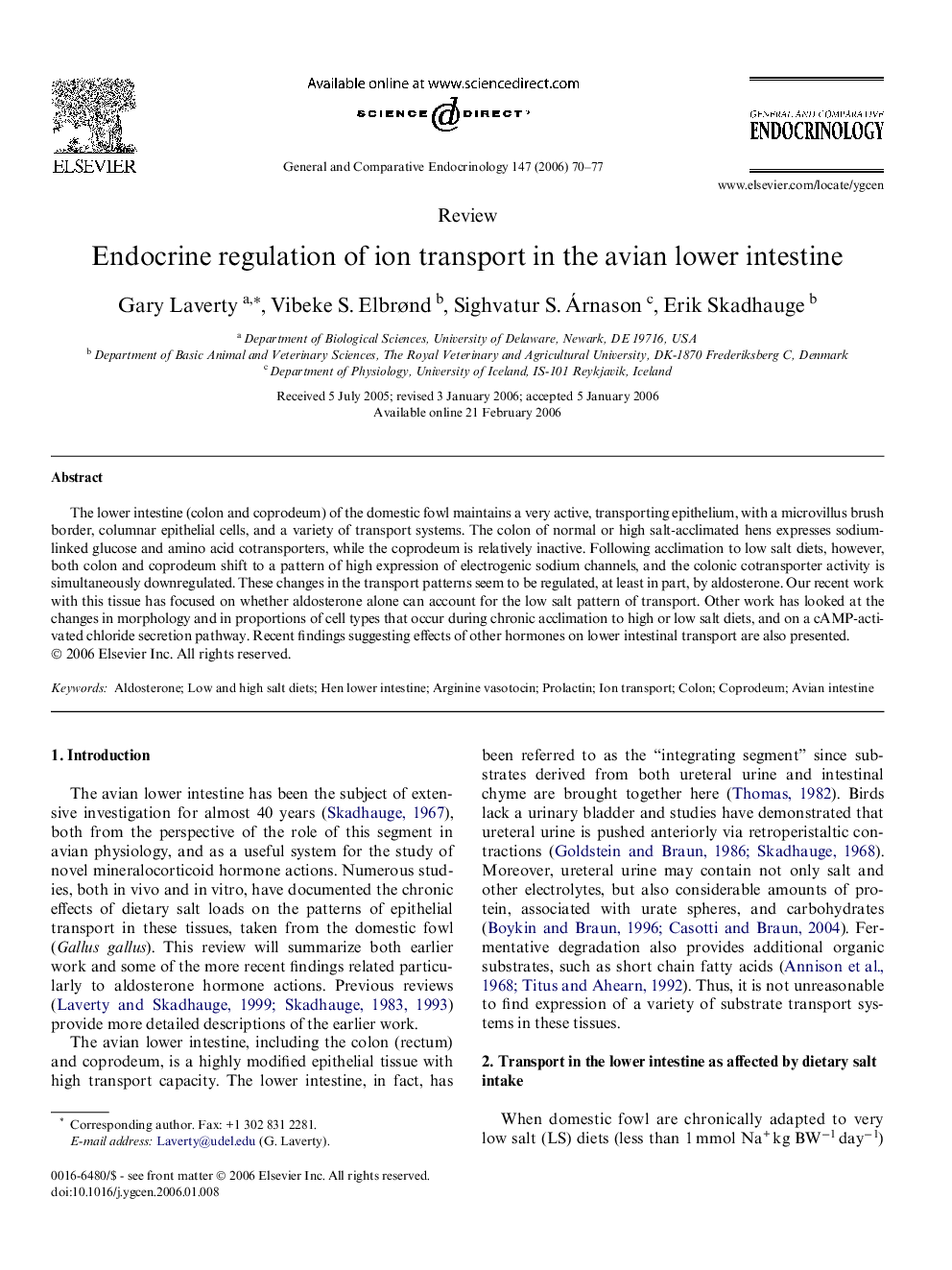| Article ID | Journal | Published Year | Pages | File Type |
|---|---|---|---|---|
| 2802339 | General and Comparative Endocrinology | 2006 | 8 Pages |
The lower intestine (colon and coprodeum) of the domestic fowl maintains a very active, transporting epithelium, with a microvillus brush border, columnar epithelial cells, and a variety of transport systems. The colon of normal or high salt-acclimated hens expresses sodium-linked glucose and amino acid cotransporters, while the coprodeum is relatively inactive. Following acclimation to low salt diets, however, both colon and coprodeum shift to a pattern of high expression of electrogenic sodium channels, and the colonic cotransporter activity is simultaneously downregulated. These changes in the transport patterns seem to be regulated, at least in part, by aldosterone. Our recent work with this tissue has focused on whether aldosterone alone can account for the low salt pattern of transport. Other work has looked at the changes in morphology and in proportions of cell types that occur during chronic acclimation to high or low salt diets, and on a cAMP-activated chloride secretion pathway. Recent findings suggesting effects of other hormones on lower intestinal transport are also presented.
